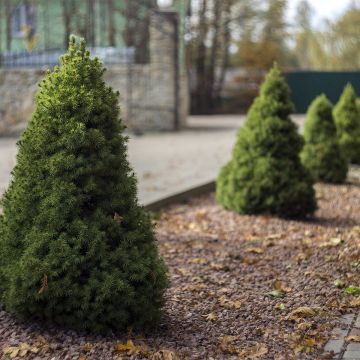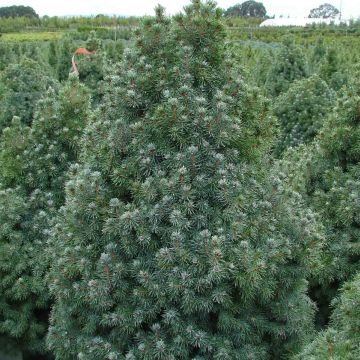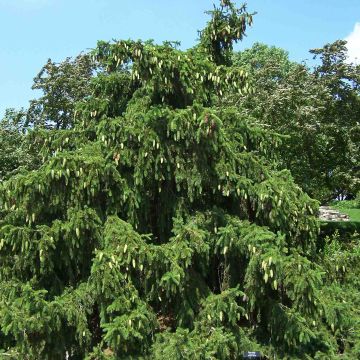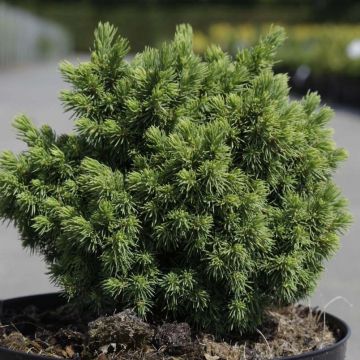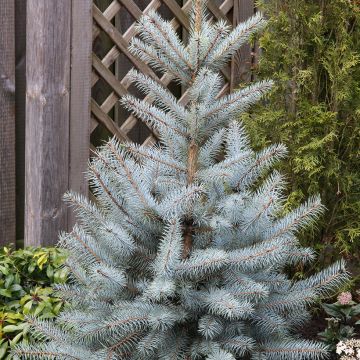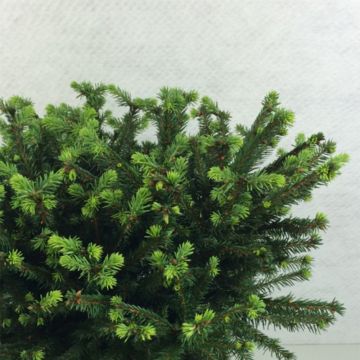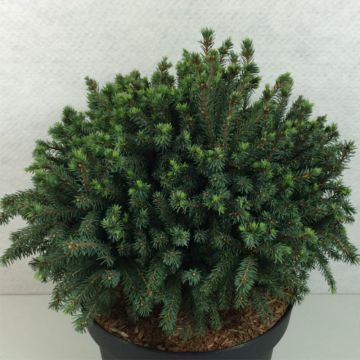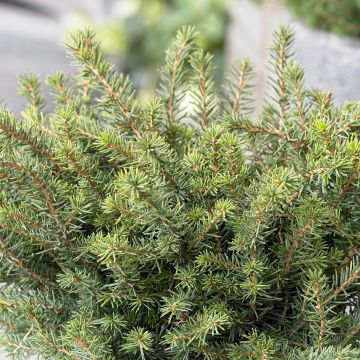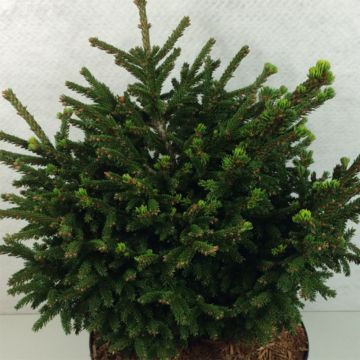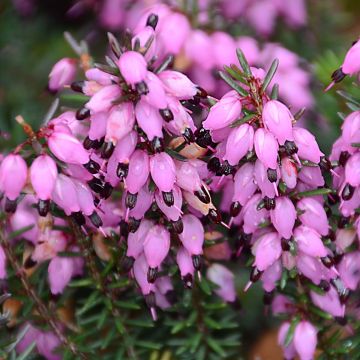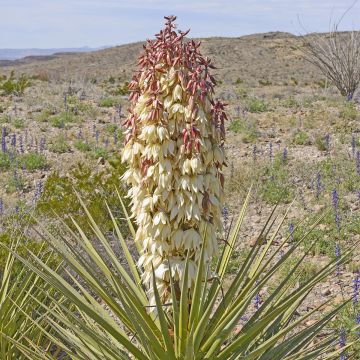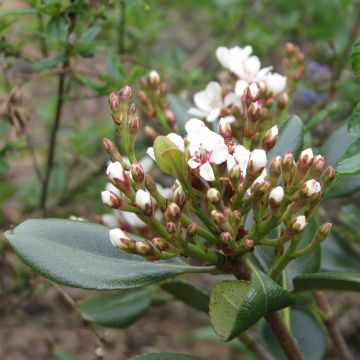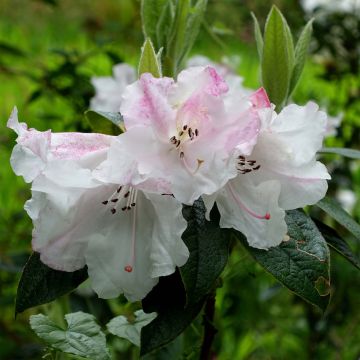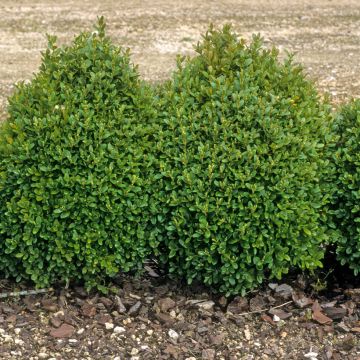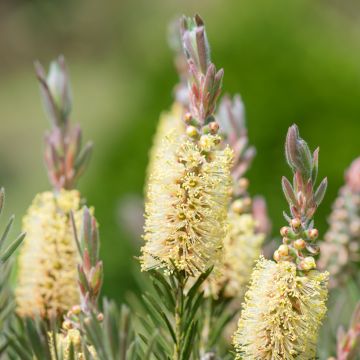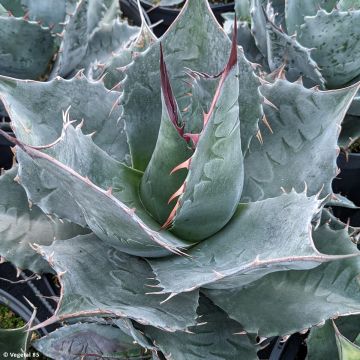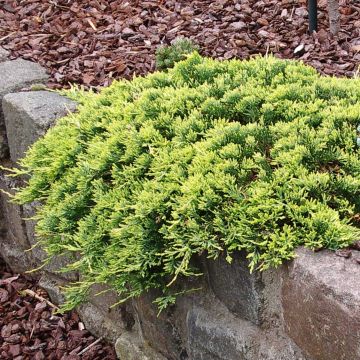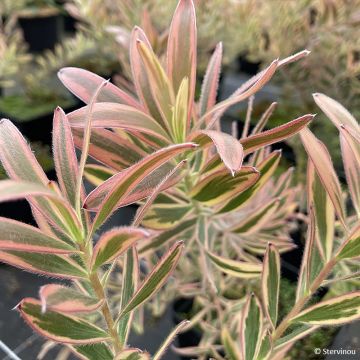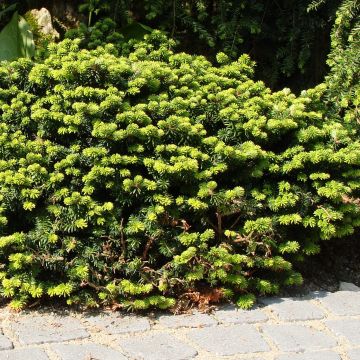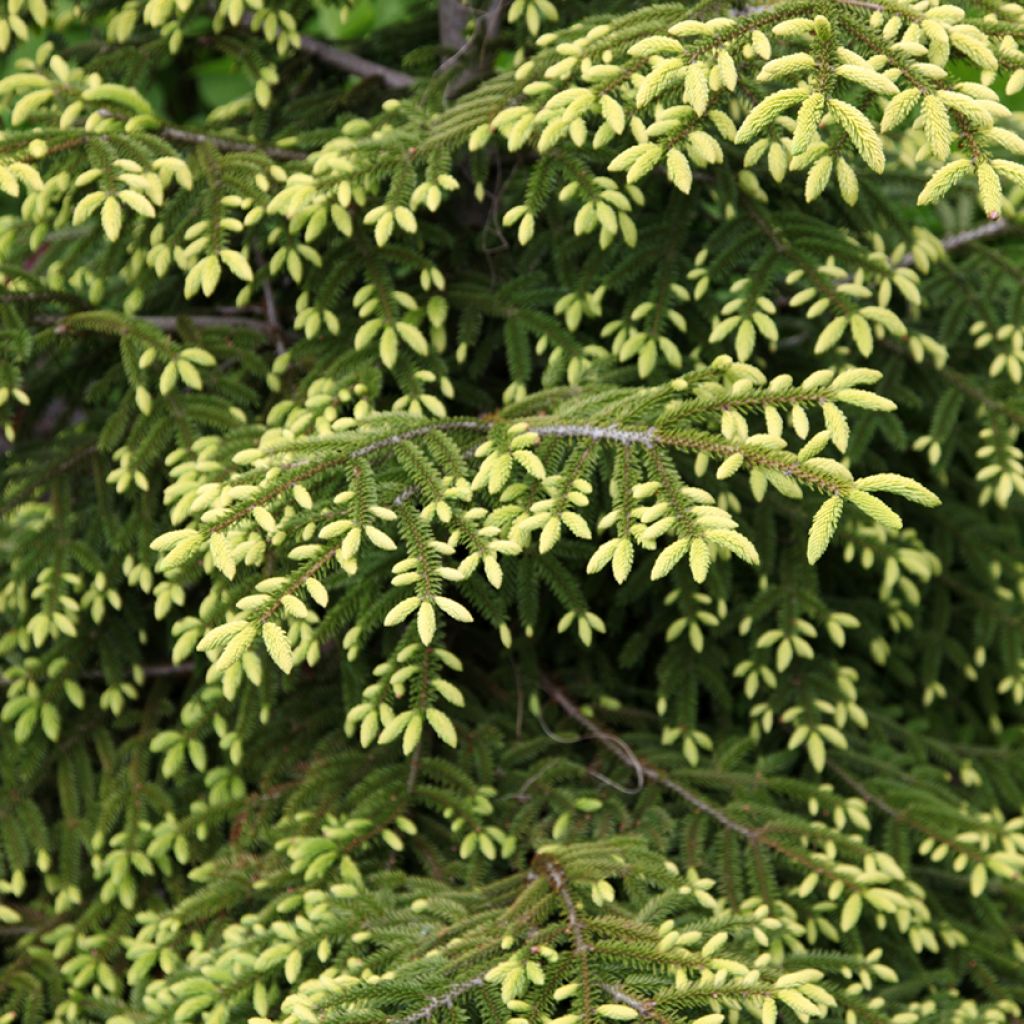

Picea orientalis Summergold - Caucasian Spruce
Picea orientalis Summergold - Caucasian Spruce
Picea orientalis Summergold
Caucasian Spruce, Oriental Spruce
This plant carries a 24 months recovery warranty
More information
We guarantee the quality of our plants for a full growing cycle, and will replace at our expense any plant that fails to recover under normal climatic and planting conditions.
Does this plant fit my garden?
Set up your Plantfit profile →
Description
Picea orientalis 'Summergold' is a variety of the Oriental spruce that is characterised by slow growth, a regular conical habit, and very beautiful yellow shoots. This Oriental spruce is adorned with dense foliage, composed of short needles that retain their golden shine for a long time before turning green. Its distinct and colourful silhouette works well when planted as a standalone specimen in the middle of a lawn. Fairly undemanding and requiring little maintenance, this variety will find a place in many gardens.
Picea orientalis 'Summergold' is a horticultural selection that is not widely distributed in Western Europe. It originates from Picea orientalis, also known as Oriental spruce or Caucasian spruce. The latter is an evergreen conifer of the pinaceae family, native to northeastern Turkey and the Caucasus. In its natural habitat, this large pyramidal tree reaching 30 m in height grows equally well on the humus-bearing soil of mixed or evergreen forests, as on the rocky slopes of the Black Sea coast. It prefers neutral to slightly acidic soils, although it can tolerate some limestone.
The 'Summergold' Oriental spruce has a dense, regular conical habit. This slow-growing tree reaches about 2 m in height in 10 years. Mature specimens reach up to 8 m in height and 5 to 6 m in width. In spring, it produces upright, quite short and very tight branches of a pure yellow. As the weeks pass, they turn yellowish-green. The branches are covered with very short needles, diamond-shaped in section, shiny, radially arranged and very dense around the branches. They have 2 very discreet white bands on the underside.
The 'Summergold' Oriental spruce is an elegant and luminous conifer, to be showcased in the garden. It thrives in many situations and adapts to various climates, as long as the soil it is planted in is well-drained and not too limestone-rich. Like all "spruces," it blends well with geometric lines and walls. The architectural qualities of conifers are also essential in designing a contemporary garden. These plants with reassuring permanence can structurally shape the landscape for the long term. To complement this 'Summergold' variety, plant heathers at its base; these plants maintain beautiful foliage in winter, and flower throughout the year if the varieties are well chosen. Creeping conifers are also good companions, as are shrubs with purple foliage (especially Physocarpus). The key is to play with volumes and colours.
Report an error about the product description
Plant habit
Foliage
Botanical data
Picea
orientalis
Summergold
Pinaceae
Caucasian Spruce, Oriental Spruce
Cultivar or hybrid
Other Picea
Planting and care
Plant Picea orientalis 'Summergold' from September to November and from February to May in ordinary, well-drained, moist soil, even poor, acidic to slightly alkaline and occasionally dry. It will grow faster in damp and slightly acidic soil. A sandy, humus-bearing or rocky soil will be perfect. Choose a sunny spot or, at a pinch, semi-shaded. Soak the root balls well before planting. You can add an organic fertiliser at planting time in poor soil, and water generously in the first years, and in case of prolonged drought. If necessary, apply a special conifer fertiliser every year in April, and weed the soil in summer. This very hardy conifer (down to -30°C at least) dislikes heavy, waterlogged soils in winter. Pruning is normally not necessary.
Planting period
Intended location
Care
This item has not been reviewed yet - be the first to leave a review about it.
Evergreen shrubs
Haven't found what you were looking for?
Hardiness is the lowest winter temperature a plant can endure without suffering serious damage or even dying. However, hardiness is affected by location (a sheltered area, such as a patio), protection (winter cover) and soil type (hardiness is improved by well-drained soil).

Photo Sharing Terms & Conditions
In order to encourage gardeners to interact and share their experiences, Promesse de fleurs offers various media enabling content to be uploaded onto its Site - in particular via the ‘Photo sharing’ module.
The User agrees to refrain from:
- Posting any content that is illegal, prejudicial, insulting, racist, inciteful to hatred, revisionist, contrary to public decency, that infringes on privacy or on the privacy rights of third parties, in particular the publicity rights of persons and goods, intellectual property rights, or the right to privacy.
- Submitting content on behalf of a third party;
- Impersonate the identity of a third party and/or publish any personal information about a third party;
In general, the User undertakes to refrain from any unethical behaviour.
All Content (in particular text, comments, files, images, photos, videos, creative works, etc.), which may be subject to property or intellectual property rights, image or other private rights, shall remain the property of the User, subject to the limited rights granted by the terms of the licence granted by Promesse de fleurs as stated below. Users are at liberty to publish or not to publish such Content on the Site, notably via the ‘Photo Sharing’ facility, and accept that this Content shall be made public and freely accessible, notably on the Internet.
Users further acknowledge, undertake to have ,and guarantee that they hold all necessary rights and permissions to publish such material on the Site, in particular with regard to the legislation in force pertaining to any privacy, property, intellectual property, image, or contractual rights, or rights of any other nature. By publishing such Content on the Site, Users acknowledge accepting full liability as publishers of the Content within the meaning of the law, and grant Promesse de fleurs, free of charge, an inclusive, worldwide licence for the said Content for the entire duration of its publication, including all reproduction, representation, up/downloading, displaying, performing, transmission, and storage rights.
Users also grant permission for their name to be linked to the Content and accept that this link may not always be made available.
By engaging in posting material, Users consent to their Content becoming automatically accessible on the Internet, in particular on other sites and/or blogs and/or web pages of the Promesse de fleurs site, including in particular social pages and the Promesse de fleurs catalogue.
Users may secure the removal of entrusted content free of charge by issuing a simple request via our contact form.
The flowering period indicated on our website applies to countries and regions located in USDA zone 8 (France, the United Kingdom, Ireland, the Netherlands, etc.)
It will vary according to where you live:
- In zones 9 to 10 (Italy, Spain, Greece, etc.), flowering will occur about 2 to 4 weeks earlier.
- In zones 6 to 7 (Germany, Poland, Slovenia, and lower mountainous regions), flowering will be delayed by 2 to 3 weeks.
- In zone 5 (Central Europe, Scandinavia), blooming will be delayed by 3 to 5 weeks.
In temperate climates, pruning of spring-flowering shrubs (forsythia, spireas, etc.) should be done just after flowering.
Pruning of summer-flowering shrubs (Indian Lilac, Perovskia, etc.) can be done in winter or spring.
In cold regions as well as with frost-sensitive plants, avoid pruning too early when severe frosts may still occur.
The planting period indicated on our website applies to countries and regions located in USDA zone 8 (France, United Kingdom, Ireland, Netherlands).
It will vary according to where you live:
- In Mediterranean zones (Marseille, Madrid, Milan, etc.), autumn and winter are the best planting periods.
- In continental zones (Strasbourg, Munich, Vienna, etc.), delay planting by 2 to 3 weeks in spring and bring it forward by 2 to 4 weeks in autumn.
- In mountainous regions (the Alps, Pyrenees, Carpathians, etc.), it is best to plant in late spring (May-June) or late summer (August-September).
The harvesting period indicated on our website applies to countries and regions in USDA zone 8 (France, England, Ireland, the Netherlands).
In colder areas (Scandinavia, Poland, Austria...) fruit and vegetable harvests are likely to be delayed by 3-4 weeks.
In warmer areas (Italy, Spain, Greece, etc.), harvesting will probably take place earlier, depending on weather conditions.
The sowing periods indicated on our website apply to countries and regions within USDA Zone 8 (France, UK, Ireland, Netherlands).
In colder areas (Scandinavia, Poland, Austria...), delay any outdoor sowing by 3-4 weeks, or sow under glass.
In warmer climes (Italy, Spain, Greece, etc.), bring outdoor sowing forward by a few weeks.

































